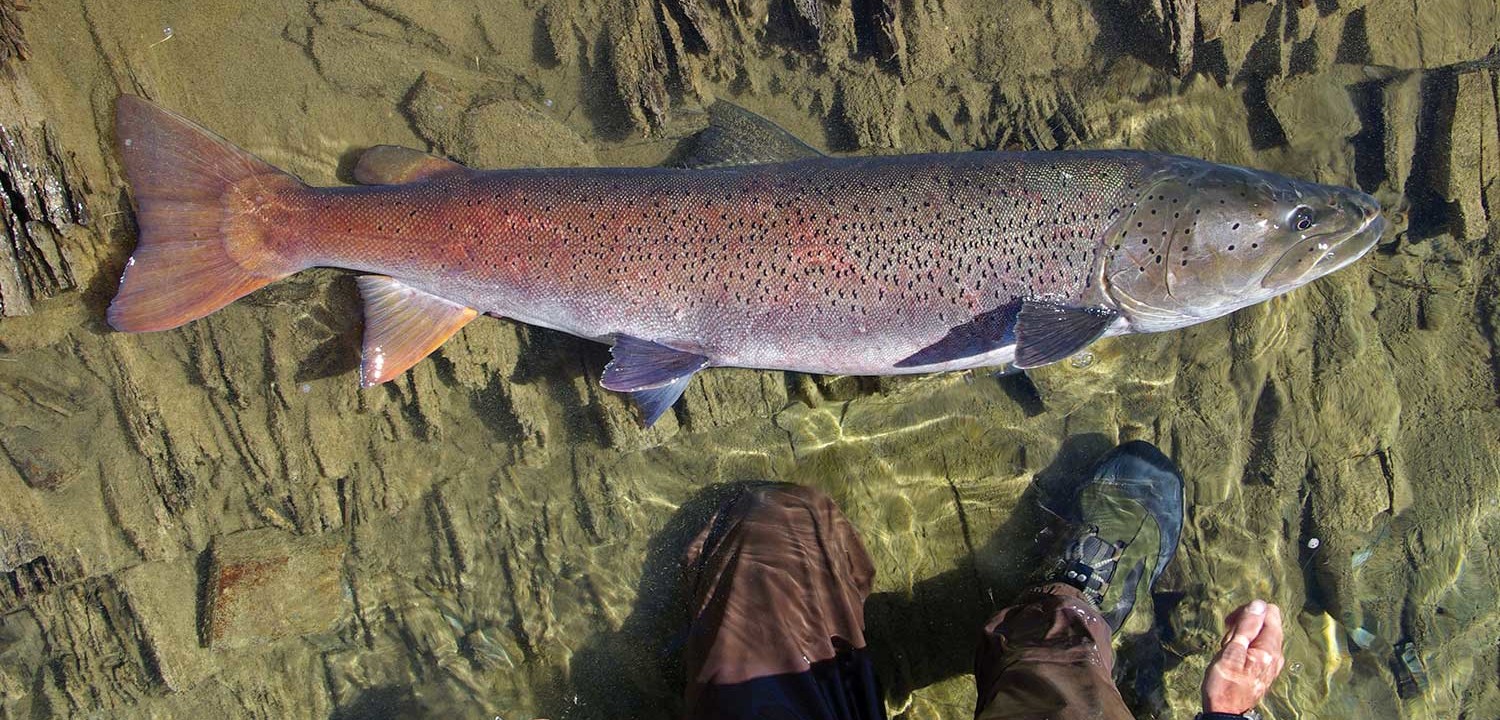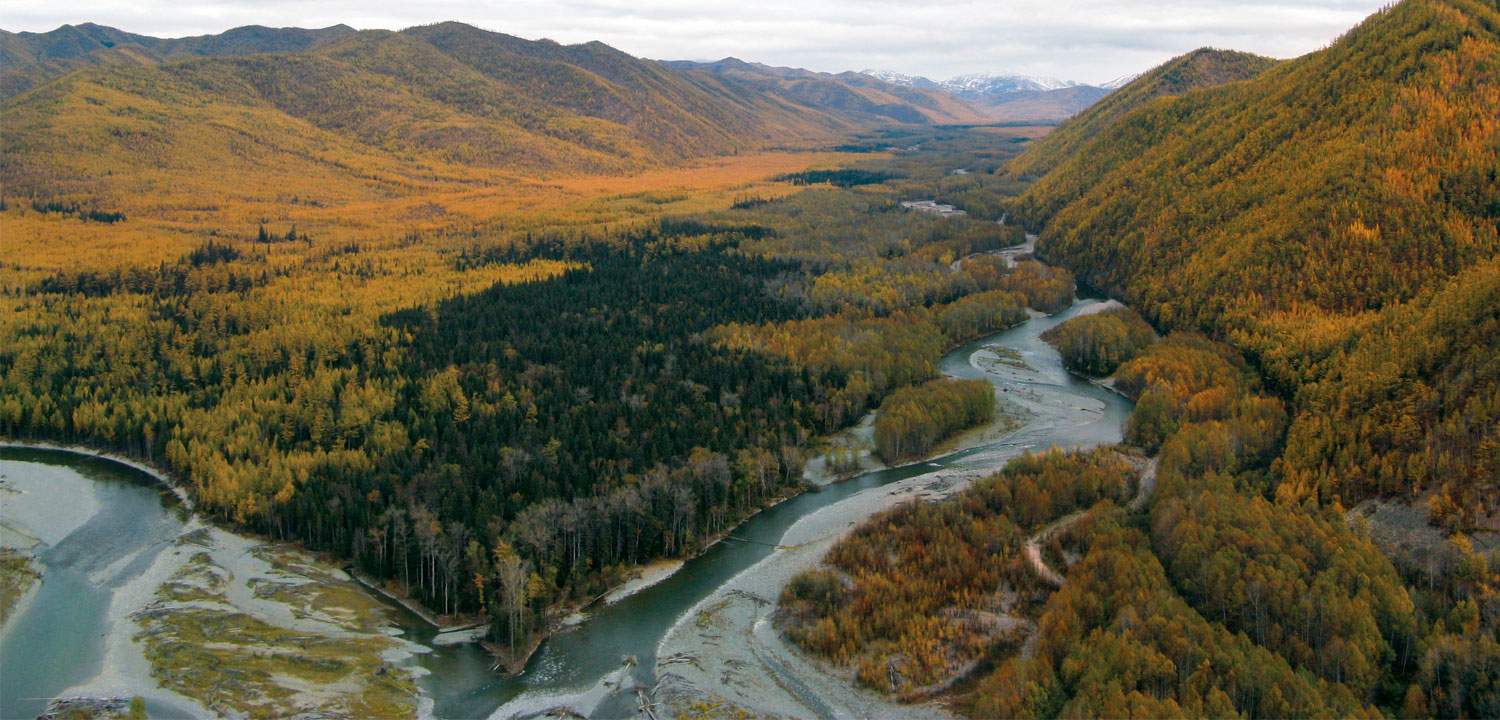A key Russian stronghold for wild salmon and Siberian taimen has received critical protection in Khabarovsk.
The Nimelen Nature Refuge protected area was established by a regional government decree late last year. The reserve encompasses more than 72,000 acres in the biologically diverse Nimelen River watershed, home to rare flora and fauna such as ghost orchids, wolverines, Siberian roe deer, velvet scoters, as well as vigorous pink runs and important spawning grounds for summer and autumn chum.
The Nimelen River is the largest tributary of the Amgun River, which feeds into the great Amur River, running 2,744 miles across Eastern Russia to the Sea of Okhotsk.
“The Amur was one of the great wild salmon rivers in the world. But the salmon runs in that basin have been decimated,” said Guido Rahr, president and CEO of Wild Salmon Center.
“The Nimelen has some of the last robust and healthy wild salmon runs in the Amur system. It’s a critical reservoir of wild salmon genetic diversity and abundance. This reserve will cover the spawning grounds for the Nimelen to protect its productivity going forward,” said Rahr.
WSC’s dedicated local partner, Khabarovsk Wildlife Fund, led by Alexander Kulikov, spearheaded negotiations with government representatives, local citizens and indigenous peoples to create viable protection area boundaries. The stakes were high – Kulikov’s team estimates the Nimelen River can accommodate four million spawning salmon annually. It’s also a cold water refuge: studies indicate that runoff from the Nimelen watershed’s frosty highlands reduces the temperature of the Amgun and Amur rivers.
“This reserve safeguards an important cold water tributary in the region, to ensure climate resilience for wild salmon in this area of the Russian Far East,” said Mariusz Wroblewski, WSC’s Western Pacific program director.
WSC began investing in protection of wild salmon strongholds in the Russian Far East in the late 1990s, targeting 11 river systems. The establishment of the Nimelen Refuge expands the network of protected areas to more than 2.3 million acres, including areas of the Koppi and Tugur river basins in Khabarovsk.
“Successful work of our organization aiming at protecting basins of the Koppi, Tugur and now Nimelen rivers would be impossible without continuous and effective support of (the) Western Pacific program of WSC,” said Kulikov.
The Nimelen Nature Refuge abuts previously protected areas, bringing the contiguous protected total to nearly 244,000 acres.

There are no population centers, no commercial fishing, no year-round roads and no significant legal logging in the Nimelen basin, making it one of the few large salmon rivers in the vast expanse of Khabarovsk with an almost entirely intact catchment. It contains more than 600 lakes and extensive wetlands,
One of the region’s most colorful denizens is the Siberian taimen (Hucho taimen), the largest member of the salmon and trout family, which reach up to 100 pound but are classified as vulnerable.
Khabarovsk is the only region of the world where taimen feed on adult salmon. The “river wolf” also feeds on bats, ducklings and rodents that find their way into the water. Because it is an apex species and it lives 30 years or longer, taimen are an excellent indicator of a river’s health.
Overharvest, poaching and loss of habitat are the biggest threats to the Siberian taimen. The Nimelen Reserve addresses those concerns in part by protecting a 300-meter-wide swath of forest on each side of the river and by prohibiting clear-cutting and limiting other types of logging activity throughout the basin. Logging roads have provided easy access for salmon roe poachers and illegal hunters in the past.

